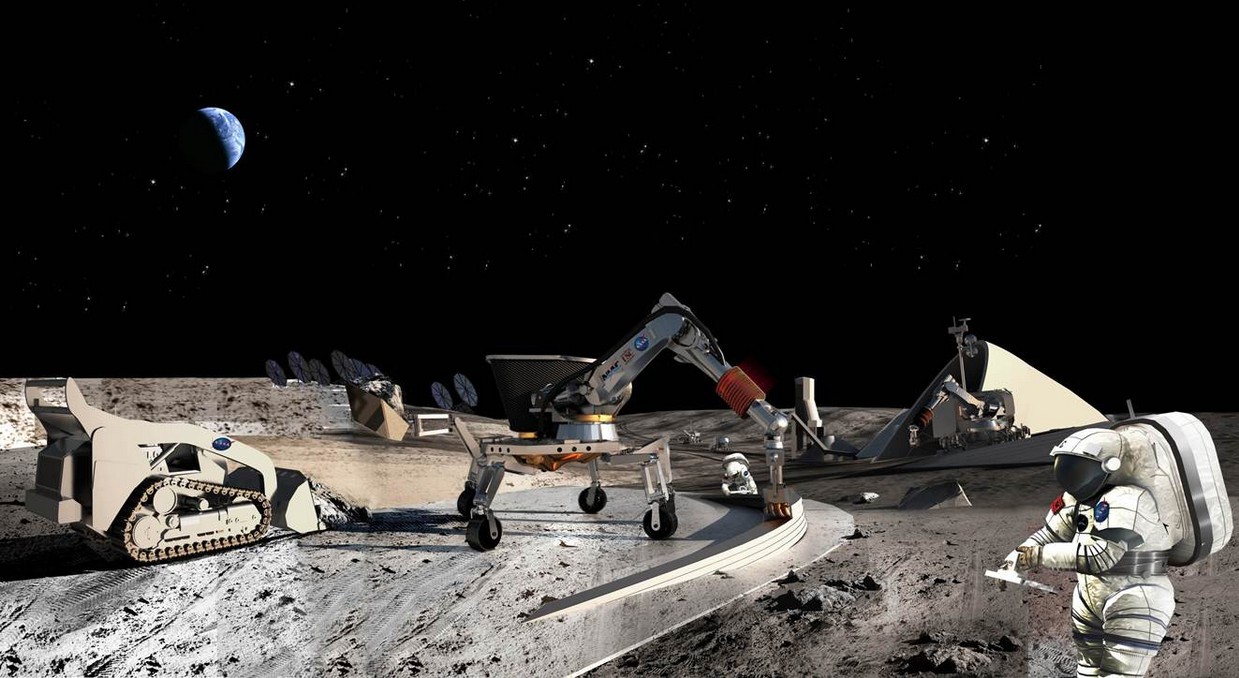WHAT IS MOON MINING?
Mining merely means the extraction of some useful product from a planet. In the context of extra-terrestrial mining, the goal is to prove that important materials can be mined on the moon or a planet , thus extending humanity’s reach into deep space.

TAIWAN TAKES THE FIRST STEP
Since years, NASA has been working on its first ever moon mining mission and has even started working on the construction of the lander and rover that will carry out the mission. It has collaborated with Chung-shan Institute of Science and Technology in Taiwan to build the lunar lander for a planned launch in the early 2020’s. Taiwan is building a $47 million, 3.7 metric ton lunar lander on behalf of NASA.
Resource Prospector, as the mission is called will take place in a small rover designed to scan the lunar surface for evidence of useful materials. Previously, orbital missions like the Lunar Crater Observation and Sensing Satellite and Lunar Reconnaissance Orbiter have given evidences that there are tons of water ice and pockets of gases on the moon. This mission will try to mine it in the first ever in-situ resource utilization (ISRU) proof of concept.
HOW IT WORKS?
The main aim of the rover is to excavate hydrogen, oxygen and water from the moon. The Resource Prospector mission is still being formulated but is envisioned to be a joint project with several national space agencies and commercial companies.
After the rover lands the moon, it will look out for water, hydrogen, and other gases through its sensors. It will drill down as deep as a meter to retrieve a sample when it finds a promising location. The sample will be further heated in an oven to determine its composition. The mission is part of the second stage to NASA's Journey to Mars program called "Proving Ground".
BENEFITS
- With the latest advancements in technology, space missions require a lot of energy resources for their success. They require more fuel, more money, and less room for error. The oxygen, hydrogen, and frozen water deposits on the lunar surface could be used to generate fuel, breathable air, and safe drinking water.
- Lunar materials can be used to facilitate continued exploration, and future economic development, on the Moon itself. The concept is usually referred to as In Situ Resource Utilisation, or ISRU. Moon does possess materials suitable for ISRU. Some of the most important ones are deposits of water ice and other volatiles trapped in cold (less than 100 Kelvin or minus 173 degrees Celsius). Not only required for human life support, water is also a ready source of oxygen (required for both life support and rocket fuel oxidiser) and hydrogen (a valuable rocket fuel)
- Based on meteorite studies, and some lunar studies, the valuable and strategic mineral resources, in heavily cratered areas of the Moon, could be very extensive. There is even a possibility of richer mineral resources hidden beneath craters.
- Since there is very little Helium 3 available on the Earth, mining the Moon's surface for Helium 3 would benefit future fusion power development, at a reasonable cost to the future industry, even with high space transportation costs included. Helium 3 can apparently provide energy to the earth for about hundreds of years and has the potential to be used as fuel in future nuclear fusion power plants.
- The import of lunar resources to the Earth’s surface would contribute directly to the global economy.
CHALLENGES
- The issue of transporting huge pieces of mining equipment.
- High costs of equipment and other resources needed for the mission.
- Reliance on robots for automation so there is minimal human risk.
- Risk to humans and the Moon’s environment.